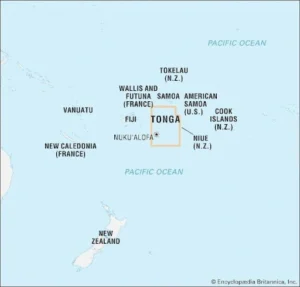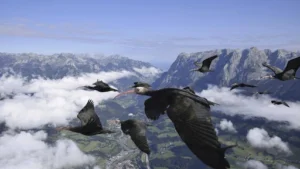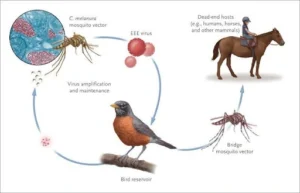UPSC GS 1
Geoglyphs
- News: Under the Maharashtra Ancient Monuments and Archaeological Sites and Remains Act of 1960, the Maharashtra government has declared 1,500 geoglyphs ‘protected monument’.
- Geoglyphs: Overview
-
- Geoglyphs are large designs or motifs created on the ground, often made from natural elements.
-

- Characteristics
-
- A geoglyph is a design drawn on the earth, usually longer than four meters.
- Difficult to see or identify from the ground, but easily appreciated from the sky.
- Typically formed from durable elements such as stones, gravel, or earth.
-
- Types of Geoglyphs
-
- Positive Geoglyphs: Created by arranging and aligning materials on the ground, similar to petroforms.
- Negative Geoglyphs: Created by removing part of the natural ground surface to expose differently colored or textured ground, similar to petroglyphs.
- Arborglyphs: A variation involving seeding plants in a special design. The design becomes visible over time as the plants grow.
- Chalk Giants: Geoglyphs carved into hillsides, exposing the bedrock beneath.
-
- Famous Examples:
-
- Nasca Lines, Peru: Large geoglyphs depicting various figures and patterns, visible from the sky.
- Uffington White Horse, England: A horse-shaped geoglyph cut into a hillside.
- Cerne Giant, England: A giant figure carved into a hillside, similar in style to other chalk giants.
-
Read also: Exploring the Magnificent Forts in India A Historical Journey | UPSC
Typhoon Shanshan
- News: Typhoon Shanshan caused a landslide in Japan leaving one dead and several injured.
- Tropical Cyclone: Overview
-
- A tropical cyclone is a significant weather phenomenon, known for its powerful winds, heavy rainfall, and potentially devastating impact on coastal regions.
-

- Formation of Tropical Cyclones
-
- Origin: Tropical cyclones form over warm ocean waters near the equator.
- Process: Warm, moist air rises from the ocean surface, creating a low-pressure area.
- Surrounding higher-pressure air moves towards this low-pressure zone, causing the air to warm up and rise further.
- As the rising air cools, it forms clouds, creating a system of spinning clouds and wind.
- The system intensifies with the ocean’s heat, and as wind speeds increase, an eye forms at the center of the cyclone.
-
- Characteristics of a Tropical Cyclone
-
- Calm Center: The cyclone’s center, or “eye,” is typically calm and clear, with very low air pressure.
- Wind Speed: The average wind speed is around 120 km/h.
- Closed Isobars: These cyclones have closed isobars, leading to higher wind velocities. Isobars are imaginary lines on a weather map that connect points of equal atmospheric pressure.
- Origin Location: Tropical cyclones form exclusively over oceans and seas.
- Movement: They move from east to west, influenced by trade winds, and are seasonal in nature.
-
- Classification of Cyclones: Cyclones are categorized based on wind speeds by the Indian Meteorological Department (IMD):
-
- Depression: Wind speeds between 31–49 km/h
- Deep Depression: Wind speeds between 50–61 km/h
- Cyclonic Storm: Wind speeds between 62–88 km/h
- Severe Cyclonic Storm: Wind speeds between 89–117 km/h
- Very Severe Cyclonic Storm: Wind speeds between 118–166 km/h
- Extremely Severe Cyclonic Storm: Wind speeds between 166–221 km/h
- Super Cyclonic Storm: Wind speeds above 222 km/h
-
- Naming of Tropical Cyclones:
-
- Regional Bodies Responsible for Naming: Tropical cyclones are named by one of five regional bodies:
- ESCAP/WMO Typhoon Committee
- WMO/ESCAP Panel on Tropical Cyclones
- RA I Tropical Cyclone Committee
- RA IV Hurricane Committee
- RA V Tropical Cyclone Committee
- Indian Ocean Naming: In the Indian Ocean, the WMO/ESCAP Panel on Tropical Cyclones is responsible for naming cyclones.
-
UPSC GS 2
Pacific Islands Forum (PIF)
- News: The annual meeting of the Pacific Islands Forum (PIF) began recently in Nuku’alofa, the capital of Tonga.
- Establishment:
-
- Formed in 1971, PIF is an intergovernmental organisation which consists of 18 member states located in the Pacific region.
-
- Aim:
-
- To promote economic growth, enhance political governance and security for the region, and strengthen regional cooperation.
- In this year’s annual meeting, climate change is high on the agenda.
-
- Members:
-
- Australia, Cook Islands, Federated States of Micronesia, Fiji, French Polynesia, Kiribati, Nauru, New Caledonia, New Zealand, Niue, Palau, Papua New Guinea, Republic of Marshall Islands, Samoa, Solomon Islands, Tonga, Tuvalu, and Vanuatu.
- Australia and New Zealand are among the wealthiest and largest countries which are part of the organisation.
- PIF is a United Nations General Assembly observer.
-
- Dialogue Partners :
-
- Currently there are 21 Forum Dialogue Partners including India, China and USA.
-
- Governance:
-
- The annual Forum meetings are chaired by the Head of Government of the Host Country, who remains as the Forum Chair until the next meeting.
- The decisions are implemented by the Pacific Islands Forum Secretariat.
-
- Headquarters: The Pacific Islands Forum (PIF) headquarters are located at Ratu Sukuna Road, Suva, Fiji.

- Tonga:
-
- It is a country in the southwestern Pacific Ocean.
- Nuku‘alofa is the capital and the chief port of the island country of Tonga.
- Tonga is a member of the Commonwealth and of the United Nations.
-
UPSC GS 3
Northern Bald Ibis
- News: The distinctive northern bald ibis, hunted essentially to extinction by the 17th century, was revived by breeding and rewilding efforts over the last two decades.
- Scientific Name: Geronticus eremita
- Former Range: Once native to Central Europe, North Africa, and the Arabian Peninsula.
- Extinction in Europe: Extinct in Central Europe by the 17th century due to excessive hunting.
- Distinctive Features
-
- Plumage: Black with an iridescent green sheen.
- Head and Beak: Bald red head with black markings. Long, downward-curved red beak. Red legs contrast against dark feathers.
- Sexual Dimorphism: None; males and females look alike.
-
- Primary Diet: Insect larvae, earthworms, and other invertebrates.
- Feeding Method: Uses long, slender beak to probe the ground, guided by a sense of touch.
- Habitat: Open areas with short grass, such as meadows, pastures, or sports fields like golf courses. Despite their vulture-like bald head, they are not scavengers.

- Social Behaviour:
-
- Historically formed large colonies, sometimes with thousands of individuals.
- Involves crest-spreading and bowing, triggering similar responses throughout the colony.
-
- Monogamy and Breeding:
-
- Seasonally monogamous; breeding partnerships often change yearly, but some pairs may remain together for multiple years.
- Nest on steep rock faces with protective nooks.
- Lay up to four greenish eggs.
- Incubation begins with the first egg, leading to staggered hatching times.
-
- Nestling Development:
-
- Young birds fledge within 42-50 days.
- Initially follow their parents before joining juvenile groups.
-
- Migration Learning:
-
- Learn migration routes by following experienced birds during fall migration.
-
- Conservation Status: Endangered (previously Critically Endangered)
Quasar
- News: Astronomers have discovered the brightest object ever observed in the universe, a Quasar named J0529-4351.
- Naming:
-
- This record-breaking celestial body, named J0529-4351, was identified using the European Southern Observatory’s Very Large Telescope (VLT) in Chile.
- This quasar had been visible in sky surveys since 1980 but was initially misclassified as a star due to its extreme brightness.
- The black hole at the heart of J0529-4351 is growing at an unprecedented rate, consuming the equivalent of one Sun per day.
-
- Quasar:
-
- It is short for quasi-stellar radio source.
- Discovered in 1963, quasars appeared as star-like objects but emitted significant radio waves.
-

- Active Galactic Nucleus (AGN):
-
- A quasar is an extremely active and luminous type of active galactic nucleus (AGN).
- Active galactic nuclei are active supermassive black holes that emit bright jets and winds, and shape their galaxies and extremely distant quasars.
- All quasars are AGNs, but not all AGNs are quasars.
-
- Characteristics of Quasar:
-
- Emission: Quasars emit intense X-rays and visible light. They are the most powerful X-ray sources discovered.
- Brightness: Among the most luminous, powerful, and vibrant objects in the universe. The brightest quasars can outshine all the stars in their host galaxies, making them visible across billions of light-years.
-
- Formation of Quasars:
-
- High Matter Density:
- Form in regions with a high density of matter compared to average cosmic regions.
- Accretion Disk Formation:
- Central supermassive black hole consumes large amounts of matter.
- Matter forms a spiraling accretion disk around the black hole.
- Inner parts of the disk orbit faster than outer parts, creating shear forces that twist the matter.
- Friction and Heat Generation:
- Fast-moving gas clouds cause friction, generating extreme heat in the disk.
- The disk becomes millions of degrees hot, shining brightly.
- Magnetically Collimated Jet:
- Some material is funnelled away from the black hole in a highly luminous jet.
- Visibility Across the Universe:
- The combined brightness of the hot accretion disk and the jet makes the quasar’s nucleus extremely visible, even from billions of light-years away.
- Discovery and Observation: Most quasars are found billions of light-years away from Earth.
-
Eastern Equine Encephalitis (EEE) Virus
- News: Four Massachusetts towns have enacted a voluntary evening lockdown in an attempt to curb the spread of Eastern Equine Encephalitis (EEE) Virus.
- Definition: It is an extremely rare but serious and often fatal infection caused by the EEE virus (EEEV).
- Transmission: Spread through the bite of infected mosquitoes.
- Host Range: EEEV can infect various animals, including mammals, birds, reptiles, and amphibians.
- Hosts Affected: Mammals, including humans and horses, are infected when mosquitoes that have fed on both birds and mammals bite them.

- Symptoms:
-
- Headache, high fever, chills, and vomiting, Disorientation, seizures, encephalitis (inflammation of the brain), and coma. Survivors often suffer from permanent neurological damage.
-
- Treatment:
-
- No vaccines are available to prevent EEE infection in humans.
- No specific antiviral treatments for EEE disease.
- Focuses on hospitalization, respiratory support, intravenous fluids, and prevention of secondary infections.
-
Read also: Overview of the Textile Industry: Trends, Challenges | UPSC
Talley Valley Wildlife Sanctuary
- News: A rare butterfly species named Neptis philyra, commonly known as long-streak sailor, has been discovered for the first time in India in Tale Valley Wildlife Sanctuary .
- Location: Talley Valley Wildlife Sanctuary is located in the Lower Subansiri district of Arunachal Pradesh.
- Geography: The sanctuary is a plateau covering an area of 337 square kilometers and is situated at an altitude of 2,400 meters. It is intersected by rivers such as Pange, Sipu, Karing, and Subansiri.
- Cultural Aspect: The sanctuary is home to the Apatani tribe, known for their distinctive customs, traditions, and handicrafts.
- Flora:
-
- The sanctuary features a diverse range of subtropical and alpine forests, including silver fir trees, ferns, orchids, bamboo, and rhododendron.
- Pleioblastus simone, a unique species of bamboo, is found only in Talley Valley.
- Several medicinal plants and herbs used by local tribes for traditional medicine are also present.
-
- Fauna:
-
- The sanctuary hosts a variety of animal species, including elephants, barking deer, giant squirrels, porcupines, leopards, clouded leopards, and wild boars.
-
Mimetus Spinatus and Mimetus Parvulus
- News: The Zoological Survey of India (ZSI) has recently identified two new spider species, Mimetus spinatus and Mimetus parvulus, from the southern Western Ghats.
- Habitat: Mimetus spinatus was found in the Mookambika Wildlife Sanctuary, Karnataka, while Mimetus parvulus was discovered in the Ernakulam district of Kerala.

- Features:
-
- Both species belong to the Mimetidae family, known for their unique predatory behavior, where they invade the webs of other spiders and mimic vibrations to deceive and kill their hosts.
- Mimetus spinatus: Characterized by a medium size, pale yellow head, and a dull grey-white abdomen with light green mottling. It has long, black, spine-like hairs on the dorsal head, which inspired its name.
- Mimetus parvulus: Noted for its pale creamy-rose head with dense grey-black mottling and a triangular-shaped, dull grey-white abdomen.
-
- Significance:
-
- This discovery is notable as it marks the first report of the genus Mimetus in India in 118 years, since the last species, Mimetus indicus, was identified.
- With these additions, the total number of Mimetus species in India now stands at three, all of which are found in the southern region of the country.
-

